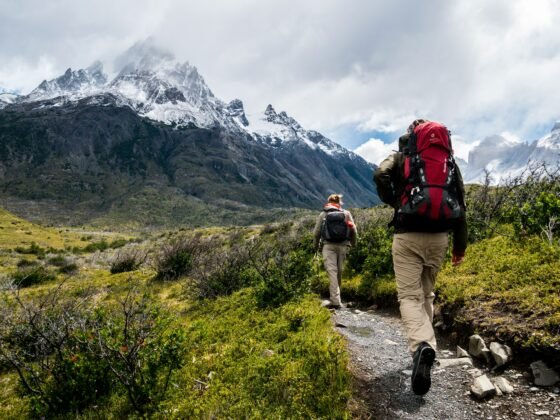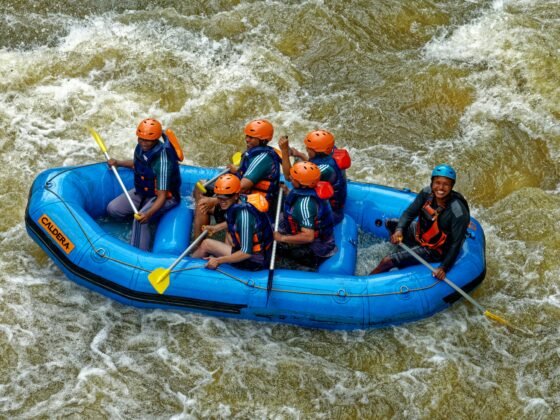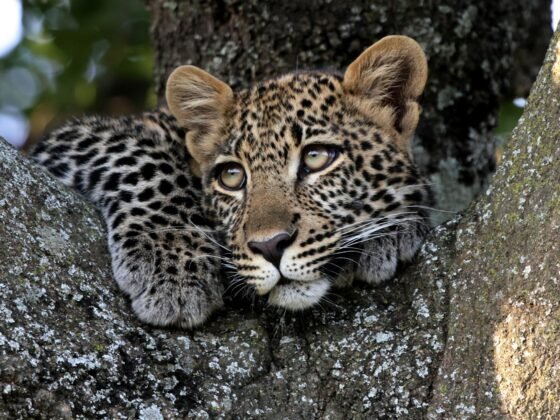Shanghai has emerged as the most modern and dynamic city in China with a skyline bursting with glitzy shopping malls, towering skyscrapers and modern monuments. Sure, the odd classical temple, historic street market and well-preserved Chinese garden can be found dotted around the city but development continues at a startling pace. Catch classical Shanghai whilst you can!
The great news for travellers exploring Shanghai this autumn is that many attractions are open at a discounted rate thanks to the annual Shanghai Tourism Festival. The festival features 42 activities and attractions at a more wallet friendly price with some offering half price entry including the Jinjiang Action Park, Oriental Pearl TV Tower (see listing below), Shanghai Science and Technology Museum and World Financial Center. Some local hotels are also participating in the promotion.
Jade Buddha Temple
The Jade Buddha Temple is located within the western region of Shanghai, China. It’s a famous rare Chinese Buddhist Temple that has jade Buddha statues and other historical cultural keepsakes imported from Burma. After Shanghai was overthrown by the Qing dynasty it was re-built in 1918. Throughout the Jade Buddha temple there are ancient Buddhist writing, rare paintings and over seven thousand Dazang Sutras. There are two courtyards in the Temple and three main halls. The present temple has influences from both the Pure Land and the Chan traditions of the Mahayana branch of Buddhism. The first hall is called Deveraja Hall with four celestial kings to possible have been buried here. The Mahavira Hall houses three statues and they’re surrounded by eighteen statues. The third hall is the Jade Buddha tower. The Recumbent Buddha and Sitting Buddha can both be found in the Jade Buddha Temple.
Nanjing Road
To worship all things commercial and to blow your travel budget wide-open, head to the Nanjing Road, which is THE main shopping road of Shanghai. In 1930 it was named as one of the World’s Seven Great Roads. The Nanjing Road has begun to make a startling comeback as after many decades it has been regarded as one of the world’s top busiest shopping streets. The Nanjing Road is located within the city center and it has two parts which are the Nanjing Road East and Nanjing Road West.
Nanjing Road’s western end is home to the luxury boutiques, shops and designer malls such as City Plaza, Plaza 66 and Meilongzhen Isetan. Here you’ll find international designer labels including Christian Dior, Louis Vuitton, Prada, Armani and Chloe. There are also Zara and L’Occitane en Provence stores here as well as many other western favourites although prices tend to be on a par with the west, depending on your exchange rate of course. The better bargains are to be had at the local stores and malls. You’ll also find Dolce & Gabbana’s new café in Shanghai to enjoy.
Shanghai in the movies; Looper from 2012 starring Emily Blunt and Bruce Willis uses the ultra-modern setting of the city as the backdrop to the new science fiction movie. The 1987 cult film The Empire of the Sun tells the tale of a boy growing up in wartime Shanghai, a very young Christian Bale plays the boy in the Japanese-occupied city.
The east side of the road is the most pedestrian travelled section compared the west side. The Nanjing Road goes from The Bund east heading towards Hongqiao and the People’s Square is in the middle.
Huangpu River and the Bund
The Bund is a waterfront area located in central Shanghai on a section of the Zhongshan Road running along the Huangpu River. There are many historical buildings that line along the Huangpu River and stands in stark contrast to the sheer modernity of the rest of Shanghai. The Bund was built during the building boom of the 19th century. The Bund of Shanghai has three main attractions visitors should visit. First is the sculpture group consisting of the sculpture Light, sculpture Sale and sculpture Wind located along the Huangpu River. The second attraction is the Square Chenyi with a stone statue of Chenyi who was the first mayor of Shanghai. The third attraction is the Sightseeing Tunnel which is popularly known as one of the first underwater tunnels for people traveling on foot.
Shanghai’s diverse landscapes will be celebrated during the annual Shanghai Tourism Festival (15 September to 6 October 2012) where the China National Tourism department will celebrate the theme of “Happy & Healthy Tour”. There are special events and festivities laid on to celebrate such as traditional cuisine on offer at ancient Qibao Street and you can catch a film at the Yalgoo Micro-Movie Festival. Sports fans will be happy (and healthy too) with the Sailing Carnival 2012, Shanghai Rugby Sevens Tournament and Shanghai Corporation Cup Regatta 2012 all being held during the event.
Yuyuan Garden and Shanghai Old Town
The Yuyuan Garden is known by many different names including Yuyuan Bazaar, Yu Gardens and just simply Yuyuan. It is located next to the City God Temple in north-eastern Shanghai. The name Yuyuan translates to mean the Garden if Happiness of Garden of Peace. The garden is located within the center of the Nan Shi walls dating back into the 16th century but it was torn down in 1912. It is surrounded by the bazaar; mazes of old lanes and alleys where the locals live.
Shanghai Museum
The Shanghai Museum was established in 1952, is located on the People’s Square in the Huangpu District of Shanghai and it houses historical ancient Chinese art. The museum has over 120,000 pieces in their collection including sculptures, ceramics, calligraphy, furniture, paintings, bronze, jades, seals, foreign art, Ming and Qing dynasties, minority art, numismatics, Chinese and ancient coins.
In August 1993 a three year long construction on the current building with its completion in 1996 and it was inaugurated on October 12, 1996. The museum has eleven galleries and three special exhibition halls hosting temporary artwork and is open 7 days a week.
Shanghainese cuisine
Shanghai cuisine is also known as Hu cuisine with uniquely modified food specific to the city. Shanghai cuisine consists of mixing several elements including: fish, crab, chicken, salted meats, preserved vegetables, sugar, soy sauce and plenty of alcohol!
Drunken dishes are popular and use alcohol as well as fish, crab or chicken which are steamed, cooked or served raw. Sugar is considered a secret ingredient and is used notable dishes such as sweet and sour dishes. The use of salted meats and preserved vegetables are an added deliciousness to the dishes.
Shanghai people do not focus on breakfast but will eat something simple such as rice in water or soup with pickled vegetables or eat a salty duck egg. Shanghainese breakfast is common purchased from corner stalls selling pork buns called xiaolong bao. A popular breakfast food in Shanghai is a pancake stuffed which radish strips. Another favourite is deep fried dough wrapped in a thick package and soy milk.
Oriental Pearl TV Tower
The Oriental Pearl TV Tower is a TV and radio tower located in Shanghai’s Lujiazui in the Pudong district. The tower was reconstructed and completed in 1994, then becoming the tallest structure in China, that was until the Shanghai World Financial Center was built in 2007. The tower sits beside the Huangpu River and is an instantly recognisable skyline landmark and contrasts with the more sedate Bund area directly across the river.











